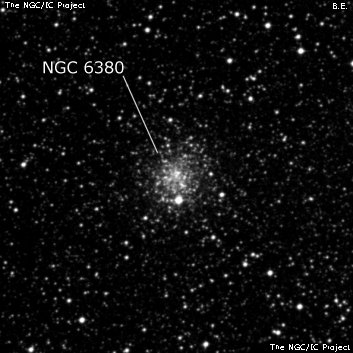
John Herschel discovered NGC 6380 = h3688 on 29 Jun 1834 and recorded "A star 9m, with a very evident eF nebulous wisp 90" l, 30" br." A note was added "The wisp by the diagram is fan-shaped and extends in the np direction from the star. See figure 18, Plate VI." Joseph Turner searched carefully for it on two clear nights without success using the 48-inch Great Melbourne Telescope in Sep/Oct 1874, although in the process he discovered the planetary H 1-26. Paris Pismis reported it as new in her 1959 paper of 24 new clusters and 2 new globular clusters found with the Schmidt camera at the Tonantzila observatory.
Although Herschel's and Pismis' positions were accurate, the RA was 1.0 minute too far east in Hartung's 1968 "Astronomical Objects for Southern Telescopes", Sulentic and Tifft's 1974 "Revised New General Catalogue", Sinnott's 1988 NGC 2000.0, the first edition of the Sky Atlas 2000.0, the first edition of the Uranometria 2000.0 atlas, Sky Catalogue 2000.0, etc.
300/350mm - 13.1" (5/30/87): extremely faint, small, very low surface brightness, visible only 20% of time with averted. Mag 9.7 HD 159073 is attached 40" SSW of center. Located 36' ESE of Howe 87 = 7.5/8.8 at 3". I failed to find it on several previous attempts. This globular, along with NGC 6749, are the two most difficult NGC globulars.
Notes by Steve Gottlieb